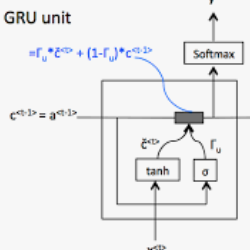Recurrent neural networks have flourished in many areas. Consequently, we can see new RNN cells being developed continuously, usually by creating or using gates in a new, original way. But what if we told you that gates in RNNs are redundant? In this paper, we propose a new recurrent cell called Residual Recurrent Unit (RRU) which beats traditional cells and does not employ a single gate. It is based on the residual shortcut connection together with linear transformations, ReLU, and normalization. To evaluate our cell's effectiveness, we compare its performance against the widely-used GRU and LSTM cells and the recently proposed Mogrifier LSTM on several tasks including, polyphonic music modeling, language modeling, and sentiment analysis. Our experiments show that RRU outperforms the traditional gated units on most of these tasks. Also, it has better robustness to parameter selection, allowing immediate application in new tasks without much tuning. We have implemented the RRU in TensorFlow, and the code is made available at https://github.com/LUMII-Syslab/RRU .
翻译:经常性神经网络在许多领域蓬勃发展。 因此, 我们可以看到新的RNN细胞正在不断发展, 通常是通过以新的、 原创的方式创建或使用大门。 但如果我们告诉你, RNN 的大门是多余的吗? 在本文中, 我们提议建立一个名为残余常务单元(RRU)的新的重复式细胞(RRU), 它可以击败传统细胞, 并且不使用单一的大门。 它基于与线性变、 ReLU 和 正常化的剩余捷径连接。 为了评估我们细胞的效能, 我们将其性能与广泛使用的 GRU 和 LSTM 细胞以及最近提议的Morphorizer LSTM 的性能进行比较, 包括多功能音乐模型、 语言模型和情绪分析。 我们的实验显示, RRU 超越了大部分这些任务的传统常务单元。 另外, 它对于参数的选择比较有力, 允许在不进行大量调控线性任务中立即应用。 我们在TensorFlow 中实施了 RRU, 我们实施了 RU, 并在 http://github.com/ LU- Sylab/ RRU/ RRU/ RRURRU/ RRU/ RRU/ RRRU) 上提供该代码。



